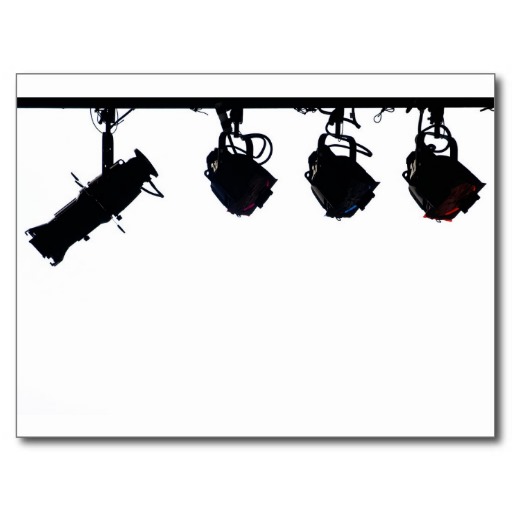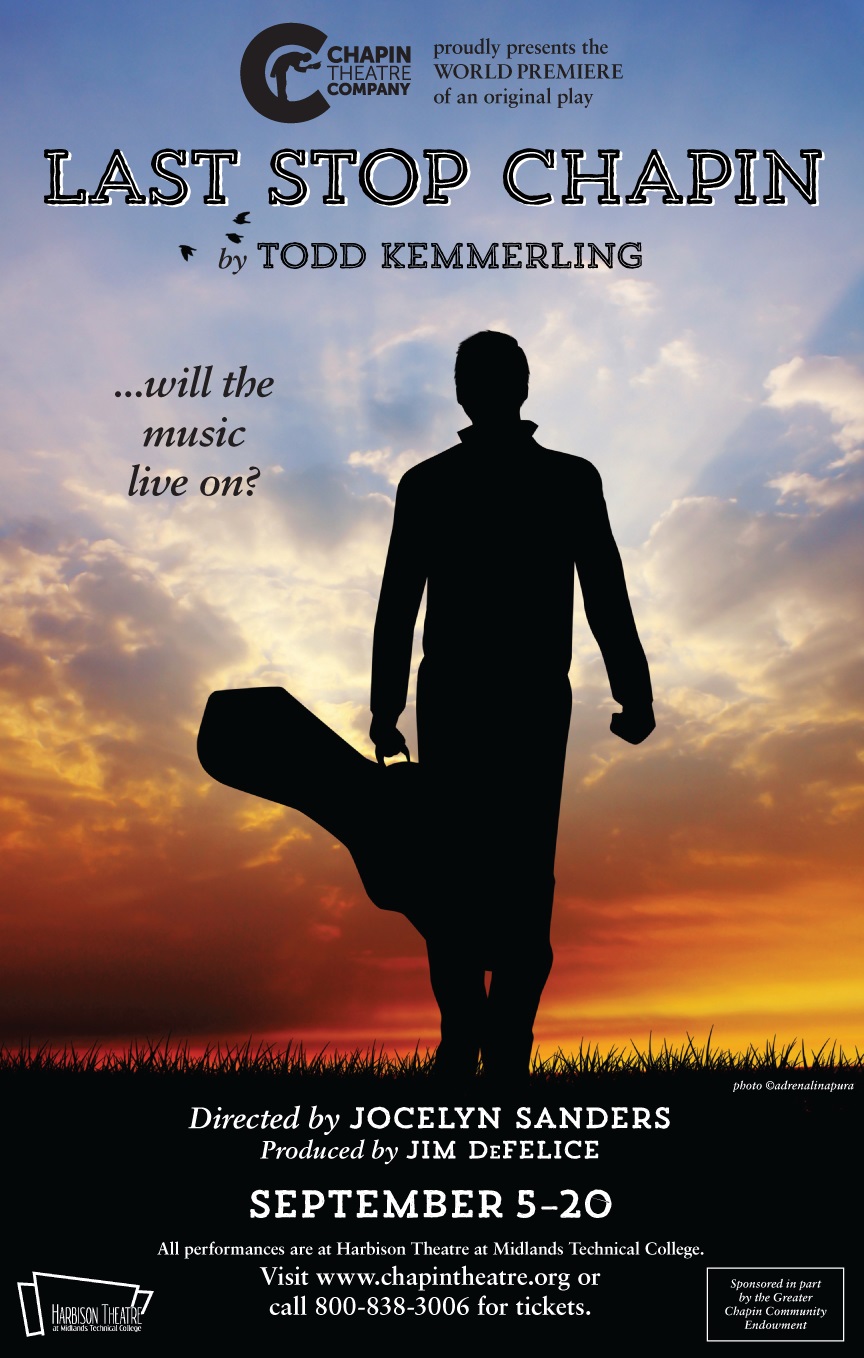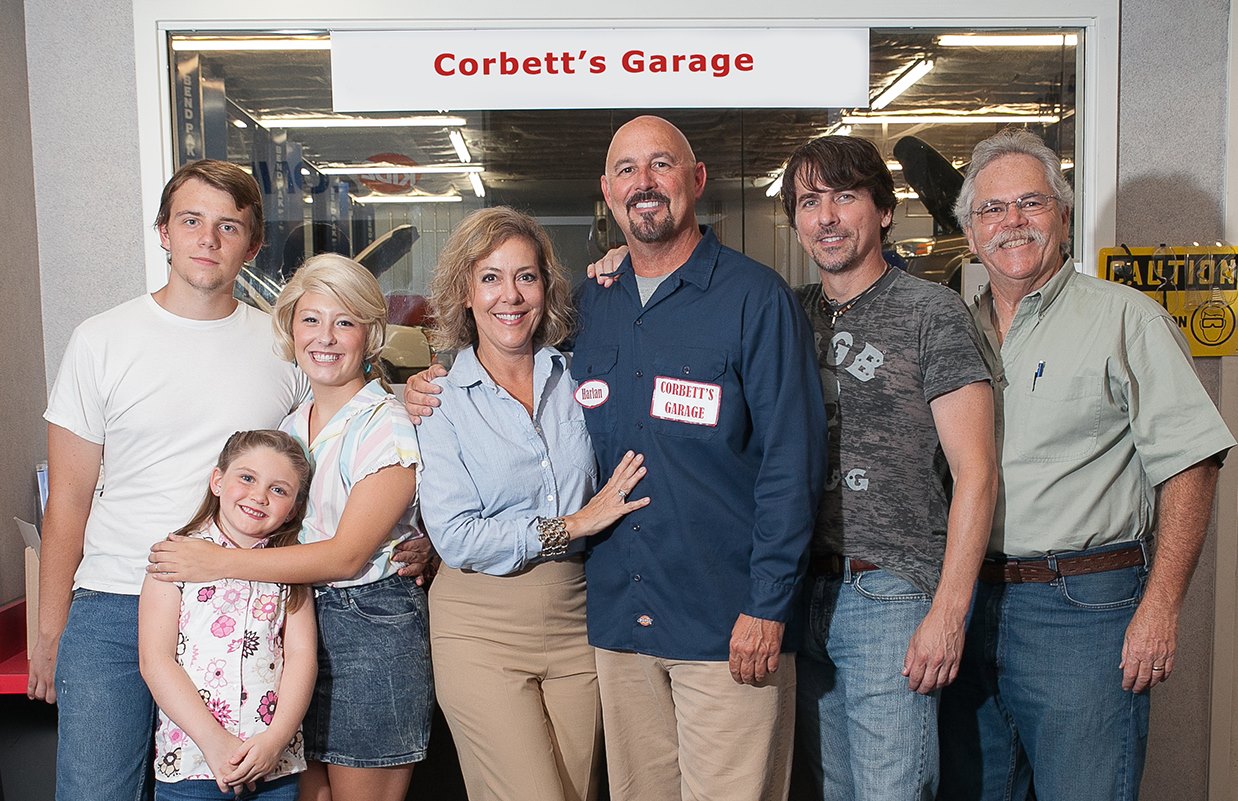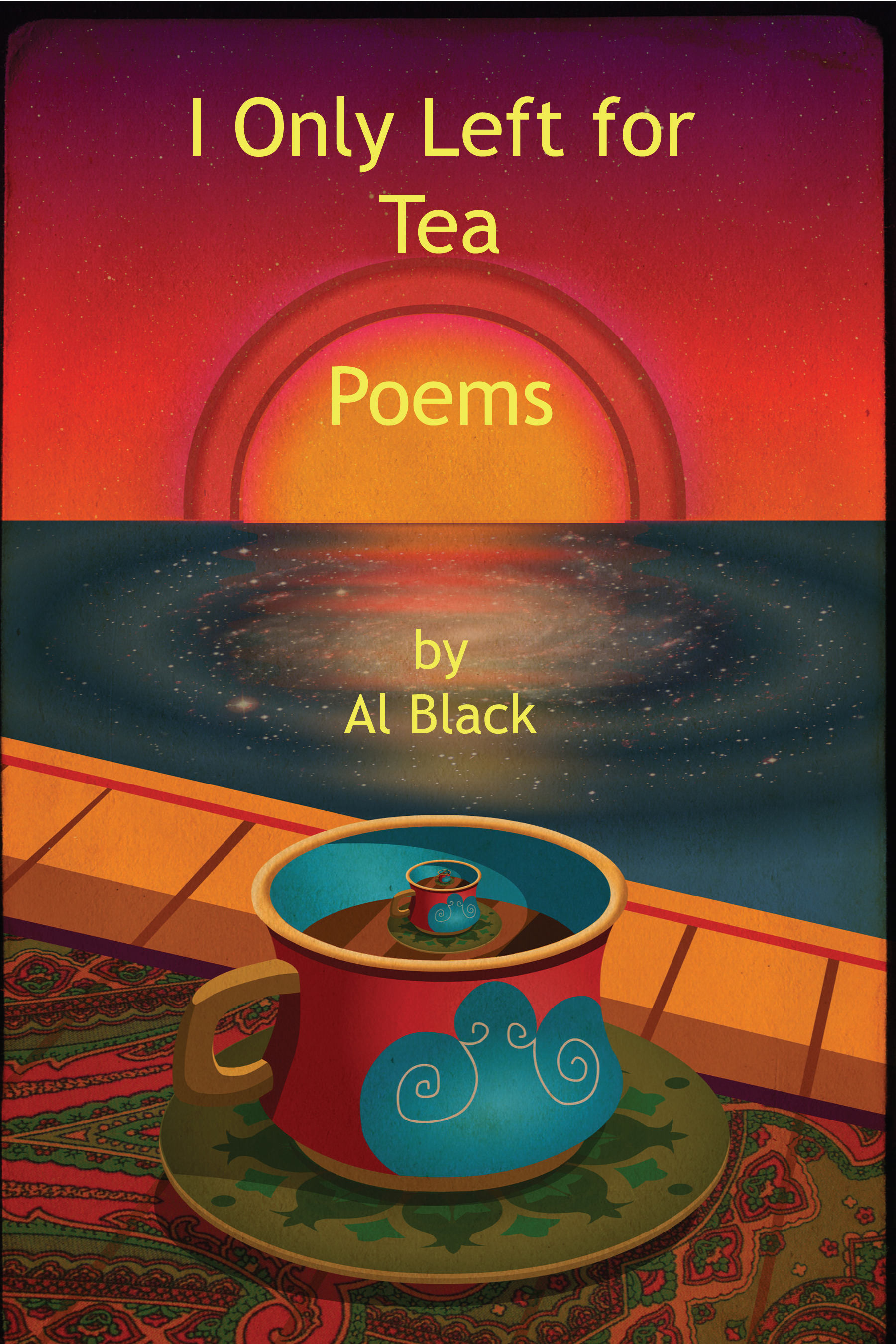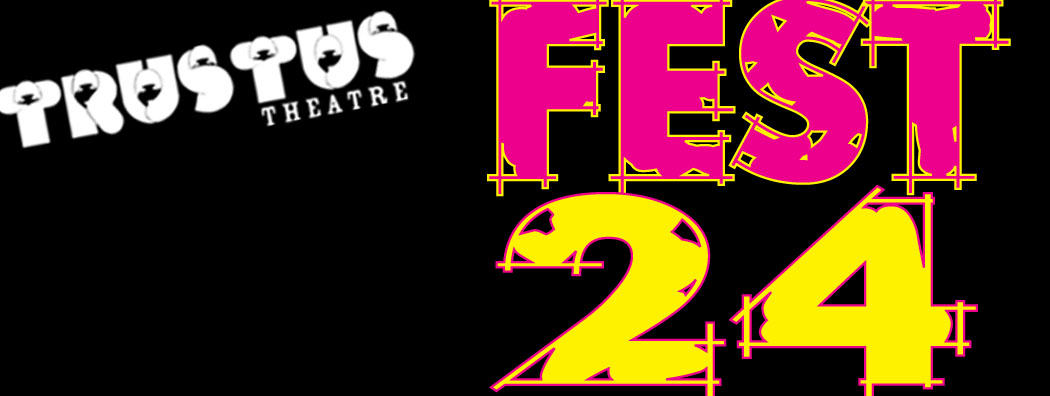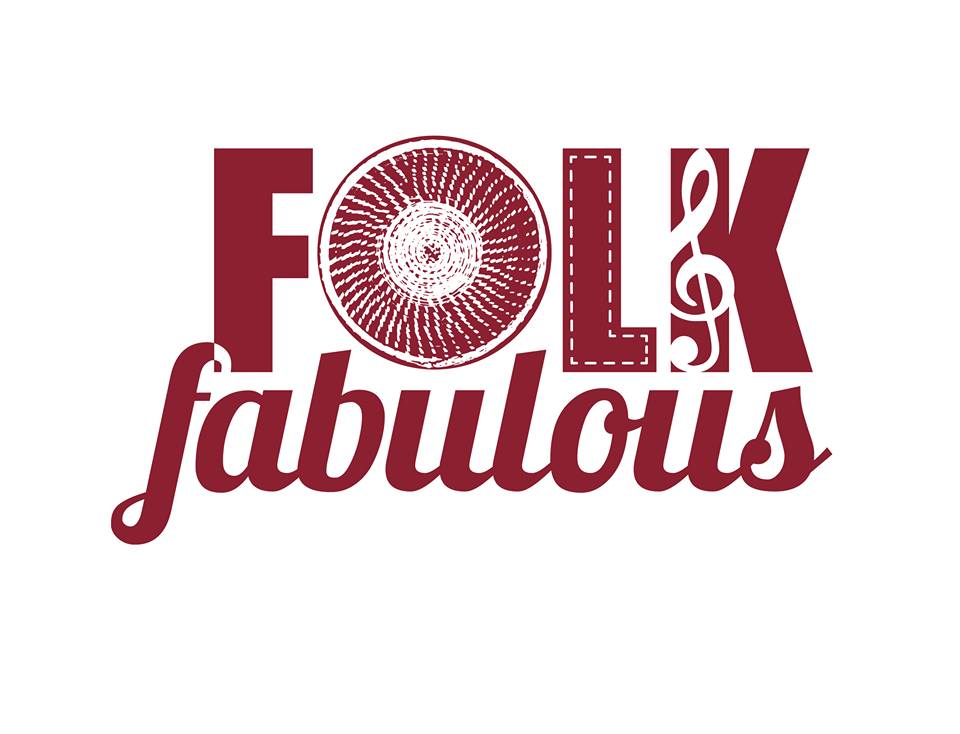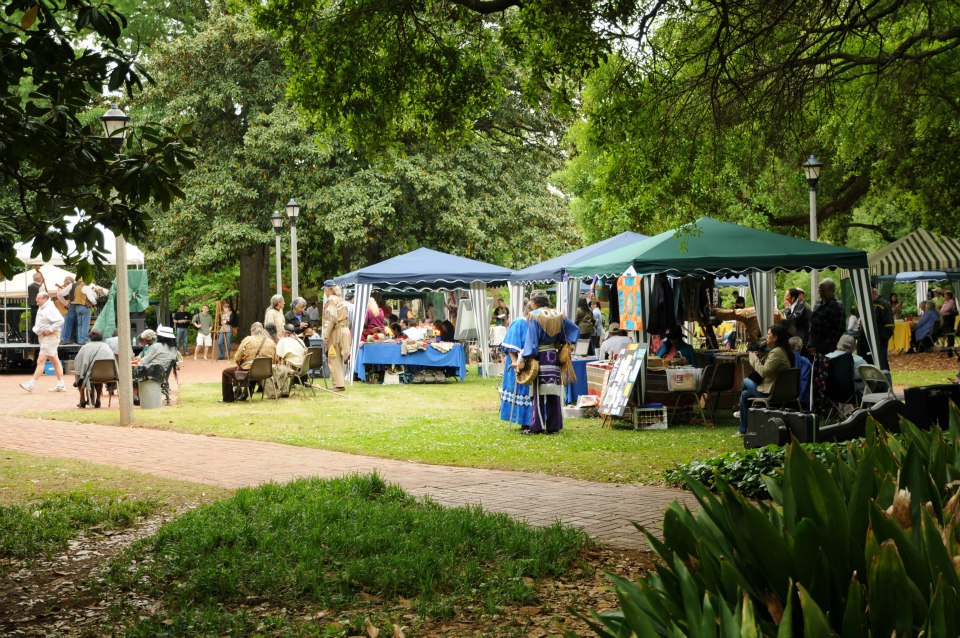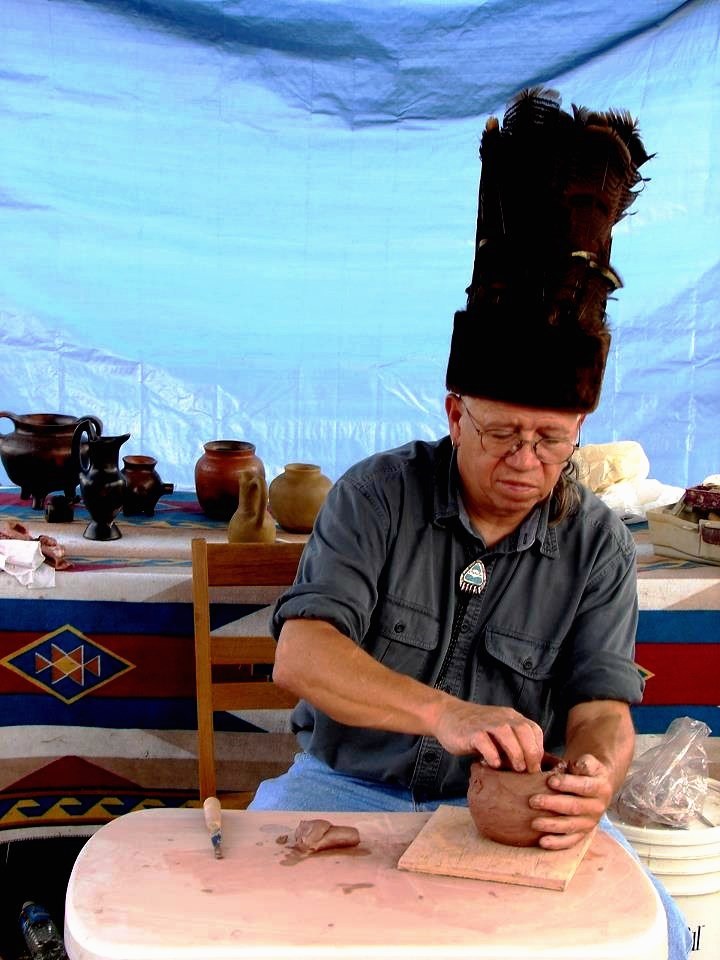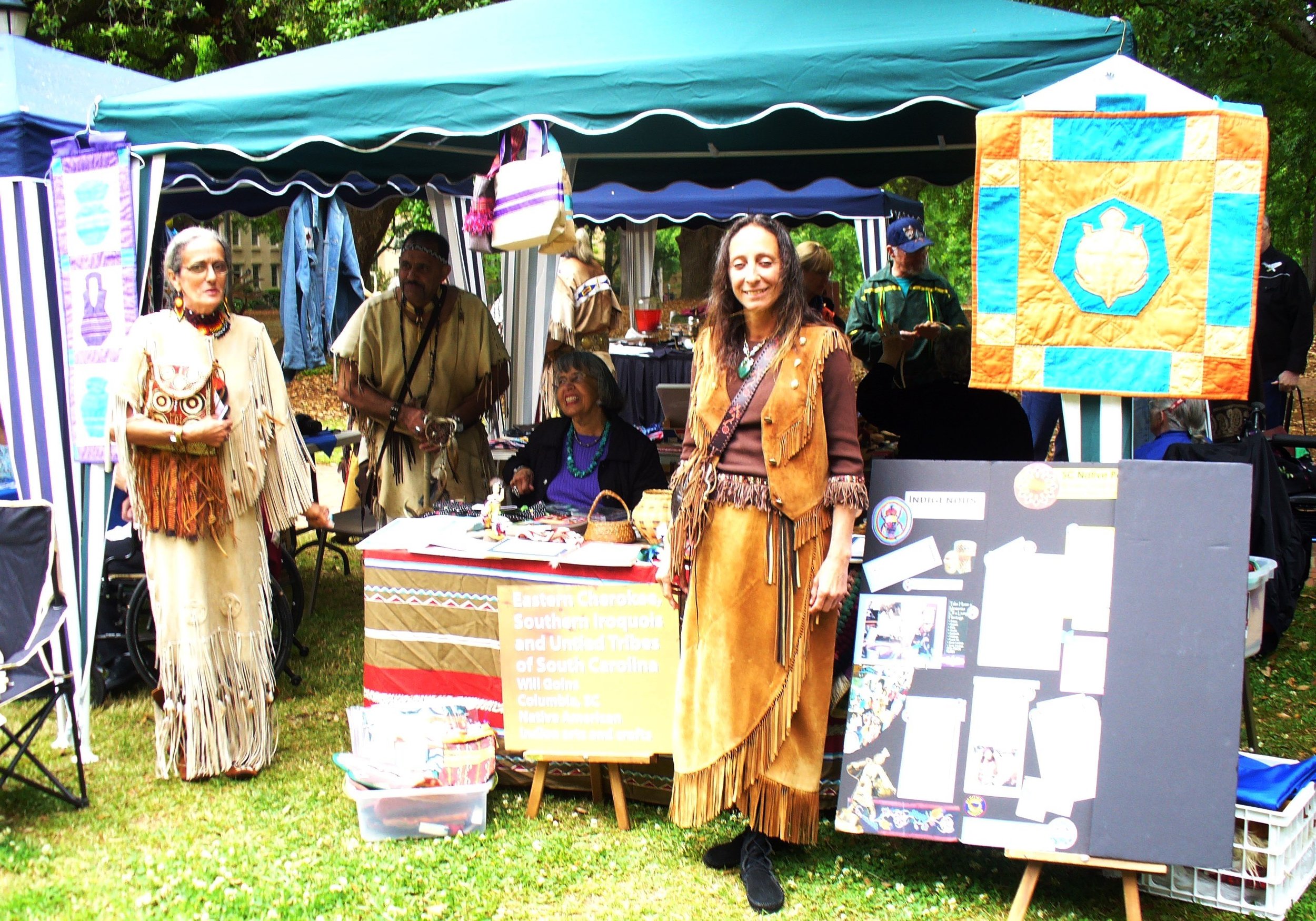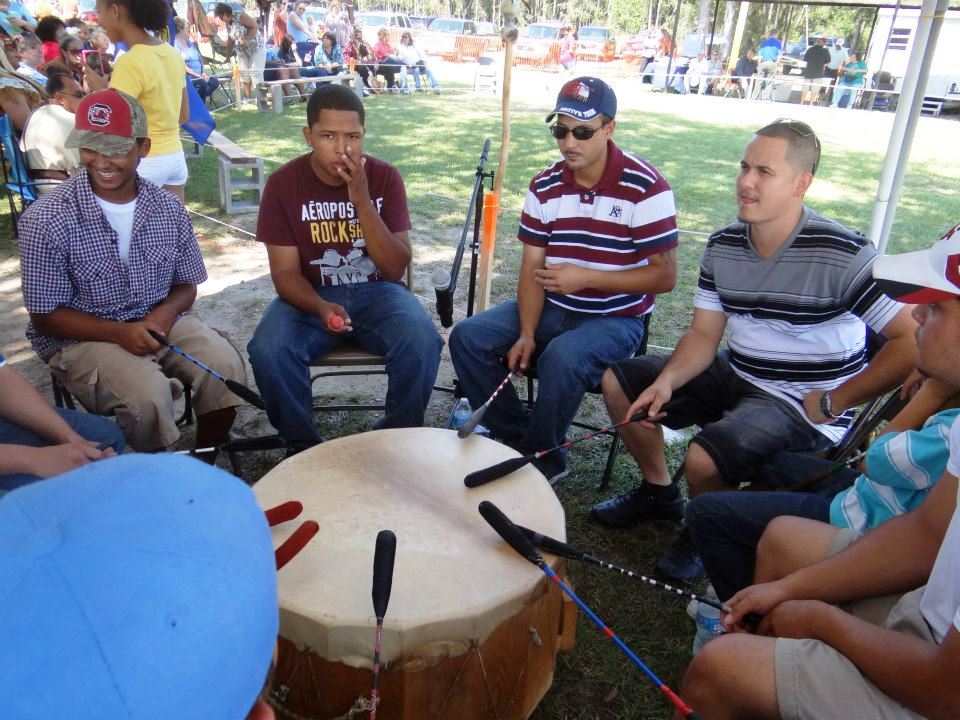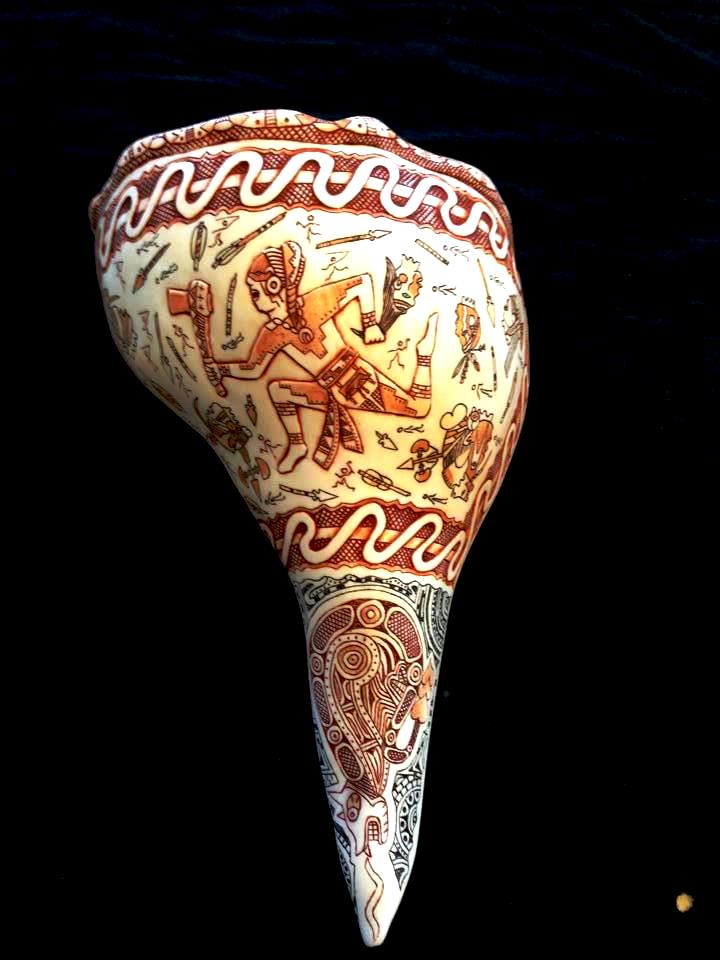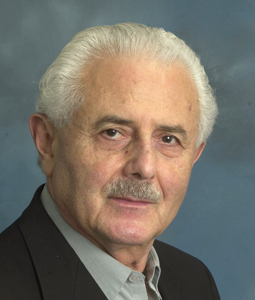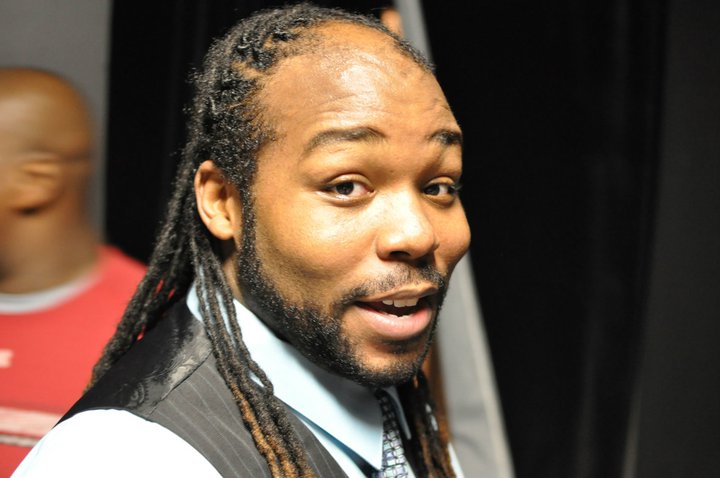
(In Part 1, Charlie Goodrich discussed his desire for years to produce Stephen Sondheim's Follies live on stage. Here he continues with the casting process.)
I now had 5 more major roles to cast among the “Present Day” characters: Roscoe, Ben, Phyllis, Vincent, and Vanessa. Several months back, I had approached Jeremy Buzzard about being my musical director. Buzzard, a brilliantly talented operatic singer, had appeared with me in Les Mis as the Bishop of Digne. Jeremy enthusiastically agreed. When it came time to find an “aging” tenor to portray Roscoe, the singer that opens the show with “Beautiful Girls,” it dawned on me that I had Jeremy already involved, and could make use of his gorgeous vocals, despite the fact that he is 40 years too young to play Roscoe. With a little aging up though, he would be perfect, and Jeremy gladly agreed. I was having a hard time figuring out whom to cast as the cool and sophisticated couple, Ben and Phyllis. In my mind, I had 2 great candidates, but they are in their 30’s, not 50’s. I finally realized, just as with casting Jeremy, that age is only a number, and looks can be adjusted to suit the part. For Phyllis, I needed an actress that possessed poise, class, a beautiful singing voice, and strong dancing skills. Phyllis not only taps in “Who’s That Woman,” but also has a tour de force dance solo in “The Story of Lucy and Jessie.” I approached my own sister Rebecca Seezen, recently seen as Fantine in Les Mis, to take on the part, and she accepted. For Ben, I needed an actor that is tall, attractive, and intelligent. I worked with such an actor in Les Mis, Bryan Meyers, who I found to be all of those things, and to possess a beautiful voice. Bryan enthusiastically took on the part, his first major lead in a theatrical production. Awesomely enough, he found out last week that he will be starring as Curly in Town’s season opener, Oklahoma, and he joked that I was his talent scout.
Finally, I needed two ballroom dancers to play Vincent and Vanessa, and dance the beautiful “Bolero D’Amour.” The number, which originated in the first production, has since been cut from most subsequent productions and deemed unnecessary to the plot. I disagreed. I find the beautiful dancing embodied by these characters to be a wonderful addition to a score made up primarily of emotional ballads. My go-to for Vincent was Tracy Steele, who has choreographed me in several productions, and has the perfect sophistication and grace needed for the role. He also is an instructor at Columbia’s Ballroom Company. He not only agreed to dance the role of Vincent, but to also choreograph the number. For the role of Vanessa, I thought of my friend and frequent director and costar, Jamie Carr Harrington. I remembered Jamie stating that she enjoys dancing immensely and unfortunately does not have the chance to do so often. She told me, “To me, dancing is fun because it is freeing.” I agree with her 100 % and jumped on the opportunity to get her back on the dance floor. With both of them cast, I was elated and excited to see this dance come together. While I will touch on rehearsals and choreography in more detail in upcoming paragraphs, it is more relevant to mention the developmental process of “Bolero,” now rather than later. I watched over a period of several Saturday mornings this summer as Tracy intricately pieced the Bolero together. With each rehearsal, my excitement grew because this number is going to be a smash! Seeing Tracy’s choreography come to life reinforces exactly why I put this number in my production, because, as Tracy stated recently, “Dance represents a type of freedom. It’s another language of expression used to convey emotion. Dance is a conversation without words.”

Then it came the time to cast the younger counterparts of the mentioned “Reunion Attendees.” All of these casting choices became easy, because once again, there is an abundance of twenty-something and teenage talent in Columbia: Richard Hahn, a local singer, would portray Young Roscoe; familiar faces from dozens of productions, Sophie Castell and William Ellis, would play Young Emily and Theodore; Erika Bryant, most noted for her portrayal of Cosette in Les Mis, agreed to play Young Solange. Awesomely, Abigail Smith Ludwig (recently seen in Trustus’ Evil Dead: the Musical) agreed to play the younger version of her mother, Young Hattie. Ashlyn Combs, fresh from playing Ariel in The Little Mermaid at Workshop, would also play the younger version of her mother as Young Meredith. She is joined in the tap dance by immensely talented teenage dancers Kimberly Porth, Zanna Mills, and Alli Reilly, who will portray Young Christine, Dee Dee, and Carlotta, respectively. Allison Allgood (Shrek, Les Mis, and Lenny in Crimes of the Heart) will lead them as Young Stella. Matt Wright, fresh from his performance as Donkey in Shrek and newly local ballerina Melanie Carrier, will dance the Bolero with their older counterparts as Young Vincent and Young Vanessa. Karly Minacapelli, praised as Ellen in Miss Saigon, will beautifully accompany Mrs. Carmella Martin as Young Heidi. Finally, Kristy O’Keefe, fresh from her performance as Tiger Lilly in Peter Pan will humorously bring to life the lyrics of “Foxtrot,” while her older counterpart sings, as Young Sandra.

The largest “youthful” parts however, belong to the younger versions of our four principles. Ben. Phyllis, Buddy, and Sally. Young Ben needed the same qualities as his older counterpart, and it was easy for me to envision Anthony Chu, memorable as Bahorel and a Sailor in Les Mis, to take on the role. Young Buddy, too, needed to be like his older counterpart, and I cast Drew Kennedy. Drew is most noted as a local singer and guitarist, and was last seen on stage at Town in Joseph.

For Young Sally, I fortunately got to make use of another mother daughter pair and cast Beth Allawos Olson in the part. Beth not only resembles her mother, but perfectly brings to life the happiness and gaiety of Young Sally. Unlike her 3 costars, Young Phyllis is the polar opposite of her older counterpart. She is full of life, bubbly, pert, and ever hopeful. Susie Gibbons, with whom I have worked with in Annie Get Your Gun, Les Mis, and Shrek, and who possesses a beautiful voice and amazing dance skills, was a natural choice.

The last character I had to cast was neither a former Weismann performer nor a ghostly apparition, but rather a figment of Buddy’s imagination: his young mistress in Texas, Margie. Usually in most productions of Follies, Margie is played by a member of the ensemble, and is only seen in “Buddy’s Blues.” However, she is mentioned and addressed by Buddy in “The Right Girl.” A great idea hit me: why not cast an actress as Margie, and have her appear out of Buddy’s imagination during the aforementioned number. The very talented Emily Northrop agreed to portray Margie, and is sensational.

Now that I had Follies perfectly cast, it was time to organize my plans for the production. I made a schedule to get Jeremy working with all of the performers on their music. Knowing how talented they all are, I knew that even Sondheim would not be too much of a challenge to their wonderful musical skills. Dance wise, I knew that I wanted to recreate original Michael Bennett choreography/blocking for the majority of the numbers, especially in “Who’s That Woman,” and “The Story of Lucy and Jessie.” But could I do it myself? My only experience choreographing to date was one number, “No Time at All,” in the Pippin segment of my Damn Sweet Pajama Cabaret. But I decided to jump in feet first and tackle the intricate Bennett choreography. This decision would create my biggest challenge as a director/performer to date. Luckily, the majority of it is available on YouTube. Watching the original cast perform these dances hundreds of times, I was able to teach myself the choreography, while perfecting it in front of the mirror in the Town Theatre Green Room.

“The Story of Lucy and Jessie,” is a complicated, quick, but exhilarating song and dance that ultimately won Alexis Smith the Tony Award for Best Actress in 1971. The choreography that Michael Bennett gave her to work with has been unmatched since, and to me, is the only choreography that makes the number as effective as it should be. However, for my production, instead of having Phyllis backed by a dozen chorus dancers, I am having her backed by only 2 specifically chosen males. One of them is Young Ben, who embodies the youthful personification of her husband, and represents the reason in which Phyllis fell in love. The other is Kevin, also played by Matt Wright, who, in the libretto, is a young waiter that Phyllis fools around with at the reunion.

“Who’s That Woman,” the original showstopper in the 1971 production, is perhaps, my favorite number. Seven former chorus girls began to tap dance, and as the number increases in intensity, the ghosts of these women appear in the background upstage dancing the same dance. In a burst of brilliance, past meets present as the number reaches a shameless climax. As the 14 ladies finish the dance, the lights go out, and we see the seven “present day” ladies alone on stage, the ghosts having vanished.

I found this use of past meeting present to be simply amazing, and decided to incorporate in all the numbers that I could. Therefore, all of the “younger” characters have solos as they perform songs and dances with their older counterparts. This illusion is seen now not just in “Who’s That Woman?” but also “Beautiful Girls,” “The Rain on the Roof,” “Ah Paris,” “Broadway Baby,” “Bolero D’Amour,” “One More Kiss,” and “Can That Boy Foxtrot.” While “Bolero,” and “Kiss,” traditionally have always made use of this illusion, the other mentioned numbers have not, and I am excited to bring this innovation to them. It was important to me that each actor appearing in Follies have his or her time and talent utilized as much as possible. By doing so, all of my performers can exhibit to the audience why they are 38 of the most talented folks in Columbia.

Now that you know the background on the show, and my reasons in casting, there is nothing else for you to do but see the show! I can assure you that this is going to be a fantastic show. My actors have worked so hard throughout the summer to present Sondheim’s classic to the Columbia audience for the first time. Rehearsals have come together brilliantly.
Just to recap, the numbers that you will see performed are: “Beautiful Girls,” (Roscoe and Company) “Waiting for the Girls Upstairs,” (Buddy, Ben, Phyllis, Sally, Young Buddy, Young Ben, Young Phyllis, Young Sally) “The Rain on the Roof,” (Emily and Theodore; Young Emily and Young Theodore) “Ah Paris,” (Solange and Young Solange) “Broadway Baby,” (Hattie and Young Hattie) “The Road You Didn’t Take,” (Ben) “Bolero D’Amour,” (Vincent, Vanessa, Young Vincent, and Young Vanessa) “In Buddy’s Eyes,” (Sally) “Who’s That Woman,” (Stella, Meredith, Christine, Dee Dee, Phyllis, Sally, Carlotta, & Their Youthful Counterparts) “Can That Boy Foxtrot,” (Sandra and Young Sandra) “I’m Still Here,” (Carlotta) “Too Many Mornings,” (Ben and Sally) “The Right Girl,” (Buddy and Margie) “One More Kiss,” (Heidi and Young Heidi) “Could I Leave You,” (Phyllis) “You’re Gonna Love Tomorrow,” (Young Ben and Young Phyllis) “Love Will See Us Through,” (Young Buddy and Young Sally) “Buddy’s Blues,” (Buddy, Young Sally, and Margie) “Losing My Mind,” (Sally) “The Story of Lucy and Jessie,” (Phyllis, Kevin, and Young Ben) and “Live, Laugh, Love.” (Ben and Company).
The show goes up on Friday, August 15, at 8:00 PM at Town Theatre. Tickets are $10/General Admission, and are available by phone (799-2510) or at the door. Thank you for taking the time to read about a project that is of the utmost importance to me, and I look forward to seeing each and every one of you at Follies!
Selections from Stephen Sondheim’s Follies in Concert
Friday, August 15, 2014 at 8:00 PM
Directed by Charlie Goodrich
Musical Direction by Jeremy Buzzard
All Choreography (After Michael Bennett) by Charlie Goodrich
Except: Bolero D’ Amour Choreography by Tracy Steele
Costumes by Christy Shealy Mills
Scenic/Tech Design by Danny Harrington
Lights by Amanda Hines
Sound Design by Robert Brickner
Stage Manager: Jill Brantley
Assistant Stage Manager: Russell Castell
Dance Captain: Allison Allgood
Pianist: Susie Gibbons
Photography by Rebecca Seezen, Britt Jerome, and Charlie Goodrich






